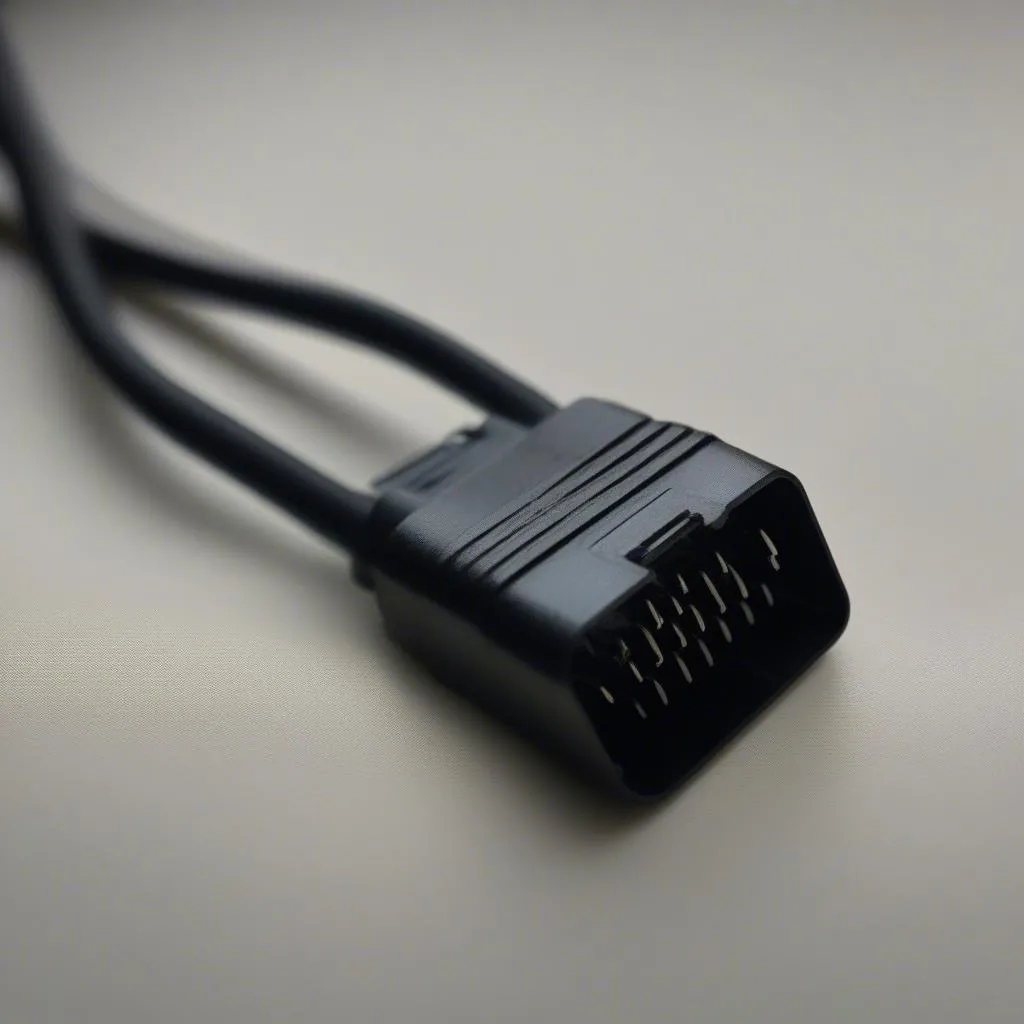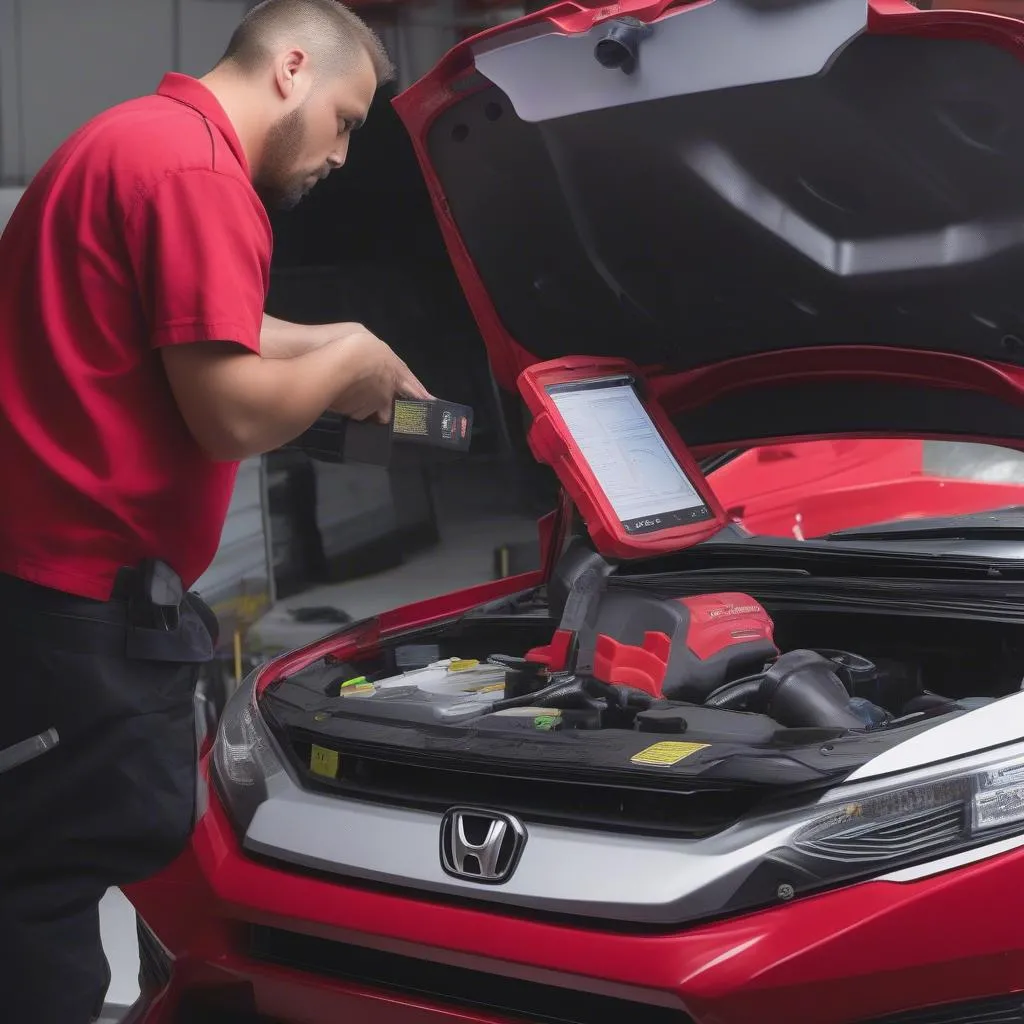Imagine this: you’re driving down Sunset Boulevard in your 2005 Honda Accord, enjoying the California sunshine, when suddenly, the “Check Engine” light pops on. Your heart sinks. What’s wrong? Is it something serious? This is where your car’s OBD system comes in, and knowing the “Honda Obd Years” is key to understanding what your car is trying to tell you.
Decoding “Honda Obd Years”
Before we dive in, let’s break down what “Honda OBD years” actually means. It’s not about your car’s age alone, but rather the specific version of On-Board Diagnostics (OBD) your Honda uses. This system acts like your car’s internal communication network, constantly monitoring its emissions, engine performance, and other vital systems. When it detects a problem, it triggers that dreaded “Check Engine” light and stores a specific code within its computer.
Why does this matter?
Knowing the OBD version your Honda uses is crucial for several reasons:
- Choosing the Right Diagnostic Tool: Different OBD versions use different connectors and communication protocols. Using the wrong tool is like trying to fit a square peg in a round hole – it simply won’t work.
- Understanding Diagnostic Codes: OBD-II, the standard since 1996, uses a standardized set of codes. However, pre-OBD-II Hondas have their own unique codes, making accurate diagnosis more challenging.
- DIY Repairs: If you’re a hands-on owner, knowing your Honda’s OBD system allows you to connect your own code reader, diagnose problems, and potentially save on expensive mechanic visits.
Honda Obd Years: A Timeline
Here’s a breakdown of Honda’s OBD adoption over the years:
- Pre-1996: Hondas from this era used proprietary OBD-I systems. These varied significantly between models and often lacked standardization, making diagnosis more complex.
- 1996 and Beyond: All Honda models released from 1996 onwards adopted the OBD-II standard. This standardized system made diagnostics and repairs more straightforward for both mechanics and car owners.
Still unsure about your Honda’s OBD system?
Don’t worry! A quick look at your car’s owner’s manual or the sticker under the hood should tell you which OBD system it uses.
Finding the OBD Port in Your Honda
Your Honda’s OBD port is usually located under the driver’s side dashboard, often near the steering column or fuse box. It’s a trapezoidal, 16-pin connector.
 OBD Port Location
OBD Port Location
Common Issues and FAQs
Here are some common questions Honda owners have about their car’s OBD system:
1. Why is my check engine light on?
As mentioned, a “Check Engine” light indicates a problem detected by the OBD system. This could range from a loose gas cap to a more serious engine issue.
2. Can I drive my Honda with the check engine light on?
While you might be able to drive for a short distance, ignoring the “Check Engine” light can lead to further damage and costly repairs. It’s best to get it checked as soon as possible.
3. Can I reset the check engine light myself?
You can temporarily reset the light using an OBD-II scanner. However, this only clears the code and doesn’t fix the underlying problem. If the issue persists, the light will reappear.
4. I have a pre-1996 Honda. How can I diagnose problems?
While it’s more complex, some specialized code readers work with older OBD-I systems. Consulting a mechanic experienced with older Hondas is also a good option.
 Honda Mechanic Working
Honda Mechanic Working
Need Help with Your Honda’s OBD System?
We understand that dealing with car problems can be stressful. That’s why our team of automotive experts is here to help! Whether you need assistance understanding your Honda’s OBD system, choosing the right diagnostic tool, or troubleshooting a problem, don’t hesitate to contact us via Whatsapp at +84767531508. We’re available 24/7 to provide you with the support you need.
Explore More
Looking for more information about your Honda? Check out these related articles:
We hope this guide has shed some light on your Honda’s OBD system. Remember, knowledge is power when it comes to car maintenance. By understanding your car’s on-board diagnostics, you can take control of its health and ensure it stays on the road for years to come.